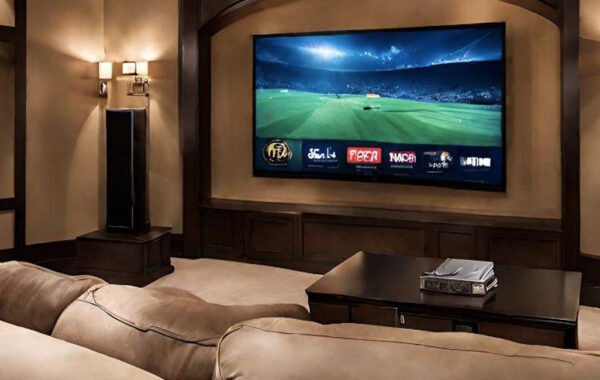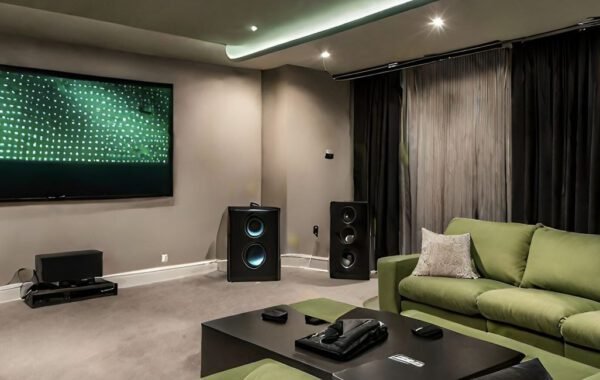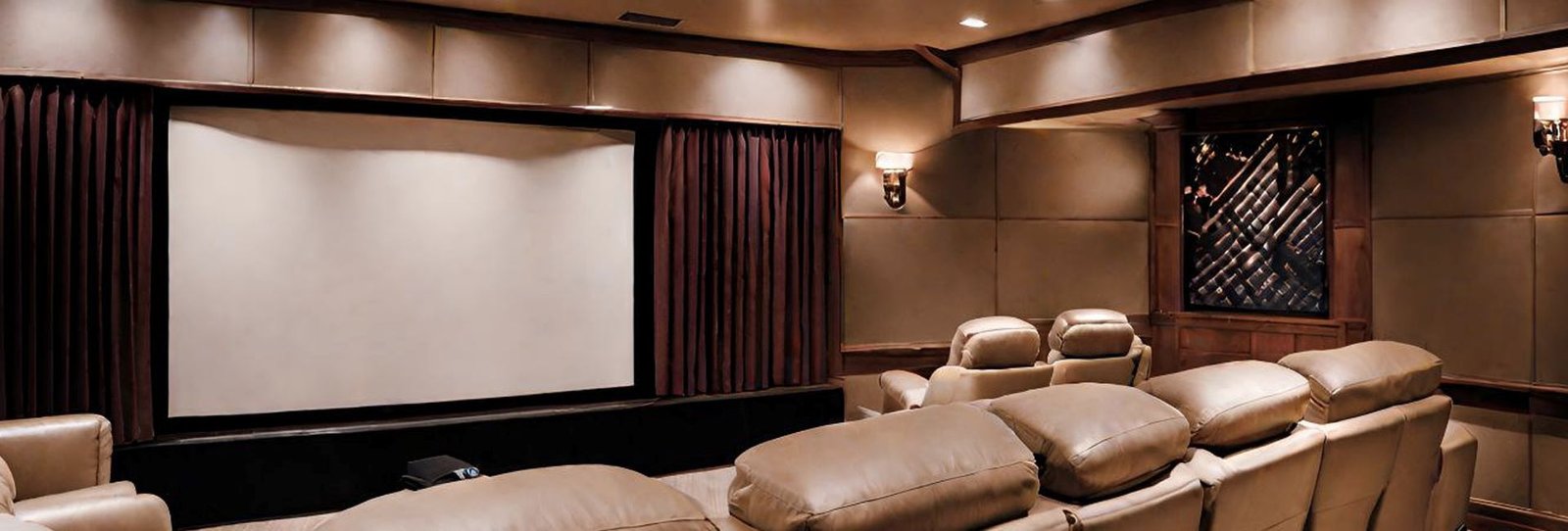
How to Choose the Best Home Theater Screen
All of us love watching movies on a big screen. While the cinema theater screen size could be as tall as 60 feet and as wide as 85 feet, the home theater screen size could be as wide as 168 inches and as high as 94 inches. The Home Theater projector screen and a high-end home theater projector bring images to life, filling colours to every pixel.
So, what makes this home theater projection screen so appealing? Is it the texture of the screen? Or is it the colour? Read on to learn how to choose the best screen for your home theater.
Screen Types:
1. Fixed
For a dedicated home cinema room, a permanently installed, fixed home theater projection screen will always be the best choice. It Doesn’t matter if you choose an eye-let-based fixed or an Elite Sable frame type variant; fixed type is considered the best home theater screen for several reasons.
Firstly, they offer better value for money compared to other types of projector screens out there. You can get a high quality, fixed type screen for as low as 25,000 INR.
Secondly, unlike the motorised variant, the fixed screen doesn’t need a power socket, making the home cinema owner and Home cinema installer’s life easier.
The next advantage is the tensioned, tight surface feature that defaults with the fixed type screen (i.e. even with a fixed home theater screen size of up to 300″) that is difficult to achieve with the other screen variants.
Last but not least, the two-inch odd velvet border that you get along with the fixed screen absorbs projector overshoot and helps you differentiate the screen from the rest of the front wall.
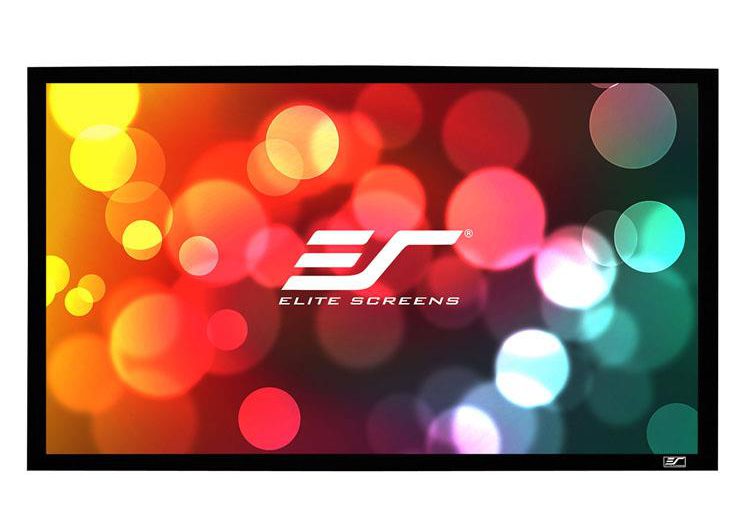
2. Manual Pulldown:
These types of screens work best for a living room home theater application wherein you might want to place a TV behind the screen. These are the least expensive screen out of the three variants that we will discuss here and are easy to operate compared to the motorised variant.
If you have apprehensions about children physically damaging your home theater screen, then this variant works superbly by offering the flexibility of screen retraction.
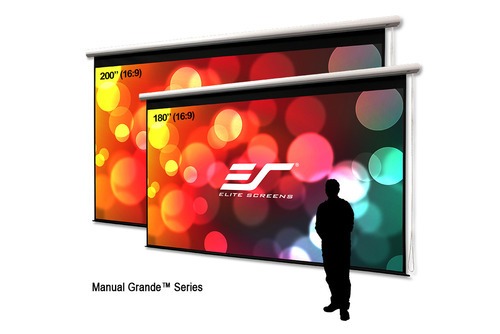
3. Motorised Screen:
Motorised Home theater screens, one of the costliest in the lineup, can be wall-mounted or ceiling recessed. These projection screens will have one or two motors depending on the screen size.
The Motorised screen needs a power connection and can be operated using a remote. Home theater installation Personnel installing the screen will need to have an excellent understating of Motorised Home cinema screen installations. In all its probability, it will also need an electrician’s additional help.
Screen Material:
The home theater screen should be tightly stretched to get the best picture quality. Wrinkles and creases are a great distraction to viewers when watching a movie or anything else.
You might think that all the projection screens under the sun are made of the same material. But not really; Vinyl is generally the preferred material of choice for economic screens. As you go up the ladder, you will find flexible PVC and other more costly materials.
When you have a QSC SC 1150 type of Home cinema speaker package that goes and sits behind the screen, you would need to have a Harkness, Elite Screens or Lumina make micro-perforated/Woven screen that would let the sound pass through. In the process, you will lose some light with these type of home cinema screens.
Screen Aspect Ratio:
When we talk about screen ratio, there are majorly three kinds, namely,
- Yesteryear 4:3 ratio.
- The most widely used Widescreen 16:9 Ratio.
- Cinemascope 21:9 ratio.
The 4:3 Screen ratios are almost obsolete for home cinema viewing, and the 16:9 ratios are most likely to be the preferred choice if you watch a lot of HDTV content.
But the 21:9 screen ratio beats them all. It is the best choice for intense Hollywood movie nights as the black bars that are generally visible with the 16:9 screen remains invisible in 21:9, and every inch of your screen gets filled with natural quality images full of rich colours.
To get the best out of 21:9 cinemascope screens, you need to have an anamorphic lens attached to the projector in use.
Screen Gain:
The reflective quality of the home theater projection screen is termed as the gain of the screen. High Gain screens reflect light more and produce better brightness compared to low gain screens.
Home Cinema Screens with very high gain value produce hotspots – a phenomenon of an image appearing brighter at the center than the edges. For a Home theater with dark interiors and dark furniture, a Screen between 1-1.4 should work just fine.
Screen Colour:
Dark coloured projection screen must be avoided as they distort the colour of the picture. While Grey or silver colour screens provide the best viewing experience in partially dark rooms, White screens suit a darker room.
The Grey screen absorbs more ambient light, but the white screen will provide high-quality images in a dedicated home theater room where light is controlled. With a gain value between 0.7 and 1.1, Grey projector screens maintain a better colour contrast than the white ones.
Screen Coating:
Home cinema projector screens with Matte white coating and Pearlescent coating are two types of most used coatings. While Matte white-coated projector screens are best placed in low-light rooms, pearlescent screens are ideal for home theatres with higher ambient light levels.
Matte white coating has low reflection, and when the room gets brighter, the colours get dimmer – giving an awful viewing experience.
But in an ambient light-controlled environment, a White screen with a High Contrast home theater projector works incredibly well.
Along with ratio, material, gain, colour, and coating of the screen, you have to consider other factors that impact the viewing experience. The area of the room, the quality of the home theater projector, the spot you want to place the screen at, the home theater screen size, and much more.
Picking the best home theater screen in India may seem like a tough job. Symphony 440 Design Group consultants evaluate your home theater needs and help you choose the best home theater equipment. If you have any question regarding building a home theater, feel free to drop a comment or reach out to us directly.
Image References: Elite Screens






